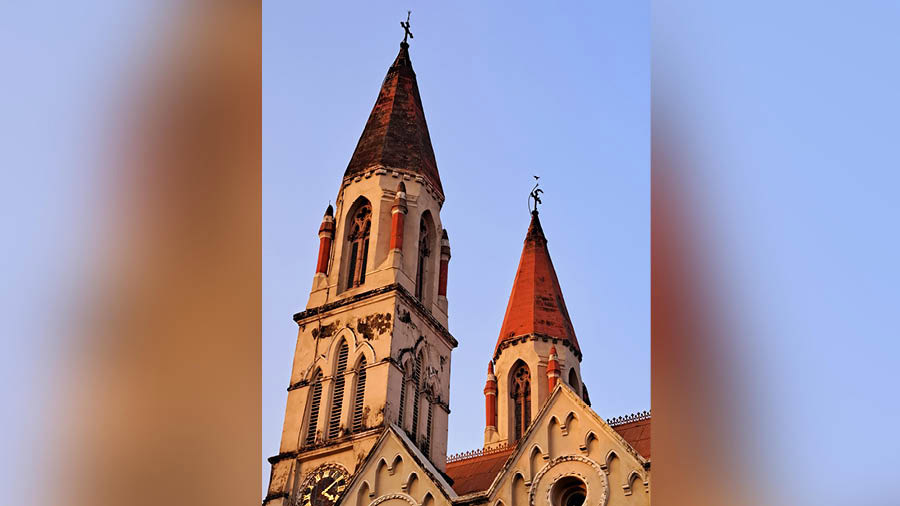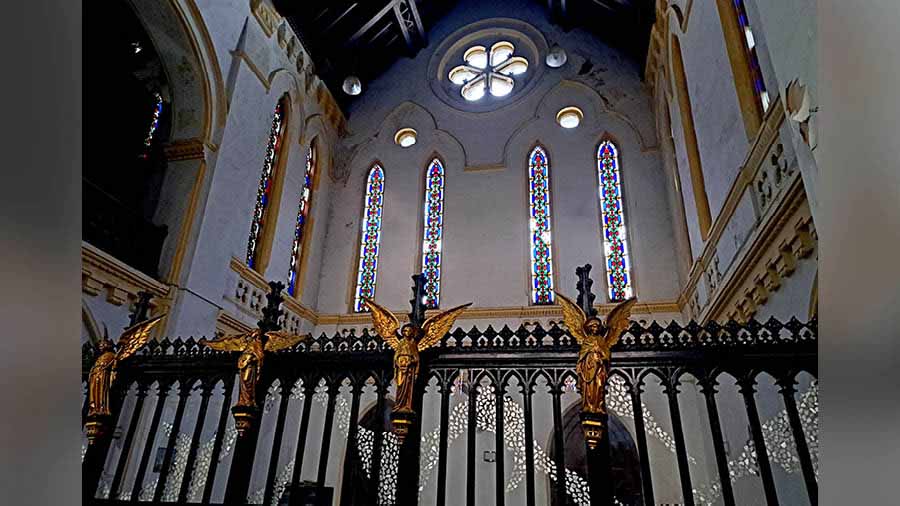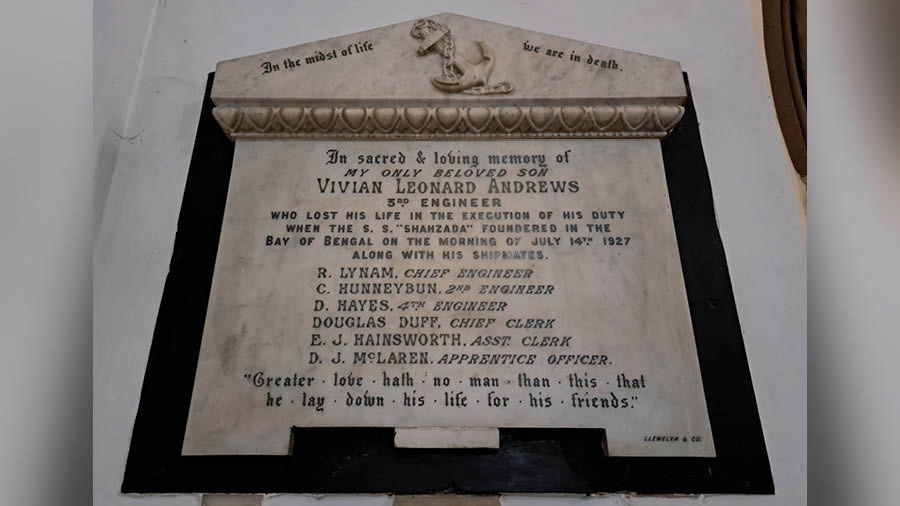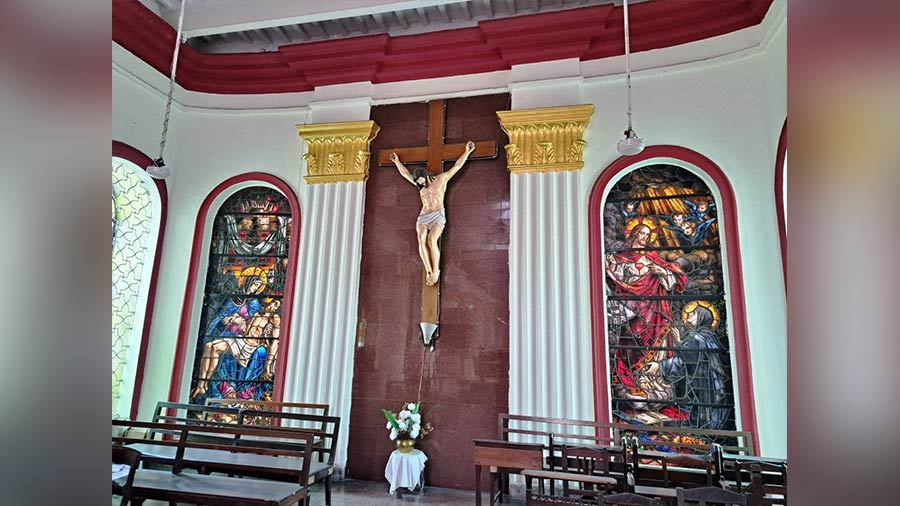Many of us are not aware that central Kolkata’s Santosh Mitra Square, known as Lebutala Park earlier, had a different name that it got from a church that used to stand next to it. It was known as St James Square, derived from the small St. James’ Church, which was used till the mid-19th century by the local Christian populace.
The building of a new church
Records point to the existence of the small Anglo Catholic Parish church situated near Amherst Street, which was in a dilapidated condition for long. On August 23, 1858, due to an infestation of white ants, its roof collapsed. This created the need for a new church for the community. At that time, noted educationist, astronomer and mathematician Archdeacon John Henry Pratt, who was involved in several religious and social services in the city, stepped in. He used his influence to acquire a huge plot of land in the garden house of one Mr Coates on Lower Circular Road. The land was given for establishing both a school and a church. And on June 7, 1862, the foundation of a new church was laid down there by John Peter Grant, then acting Lt. Governor of Bengal.
On July 25, 1864, on St James’ Day, a huge twin tower church, also called the St. James’ Church, was opened to the public. Even today, a marble tablet — the oldest remaining vestige of the church — situated on the right of the main entrance, gives vital information about the church. It says that the foundation stone for the church, constructed in a typical English gothic style with Norman details, was laid on June 7, 1862, and also reads that Bishop Cotton inaugurated the church. Rev. Dr J P Jarbo was the first vicar of the church and was in office till 1877.

The iconic twin towers of the church that give it its name, ‘Jora Girja’
The church of 1864 was not the same as it looks today. The first design of the building was done by one Sir Gilbert Scott, as illustrated in a watercolour painting done by C. G. Wray. The present structure, which has typical 19th-century English gothic elements, was designed by Walter Granvile. It was modified a couple of times through the years.
The ‘Jora Girja’
The main attraction of the church are the double-tiered twin towers that are bridged by a spacious ornamented gabled frontage crowned with a cross. The lofty spires are both decorated by a cross, and the southern tower houses a double-dial clock.
Thanks to its exceptional facade, local people started calling it the Jora Girja (twin church), a name still used by many. St James’ Church, with its two massive towers changed the skyline of colonial Calcutta and soon became one of the most frequently visited places for the local European and native population.
In those days, extraordinary chemical treatments were done on the church’s walls to protect it from weather elements. It was revealed later that various traditional admixtures were added in proportion to the mortar and plaster. This included materials like marble dust, brick powder, egg white, curd, black gram, casein and more, to make the structure strong and weather resistant.

The church is built in an English gothic style with Norman features like huge arches inside
Architectural assets
The facade on both sides have typical English Norman styled arches — a design element that continues inside the church in the main hall and side bays. Inside, there are Norman windows with provision of light. The nave of the church looks splendid thanks to its great height and massive arches. It adds to the impressive interiors of the church, which has excellent woodwork and arches. The colourful stained-glass paintings along with exotic artefacts showing the life of Jesus are awe inspiring. The most important feature of the prayer hall is its flow of natural sunlight and air circulation.
On entering the church, the object that catches your eye is a superbly polished marble Baptismal Font. The black marble basin with pink stone legs and metalwork is used to baptise infants.
The nave that houses a long prayer hall ends at a semicircular apse that is used to conduct various religious functions. On the left, are four gilded angels in the south transept of the church.The colourful stained glass panels on three sides of the church allow adequate sunlight to enter creating magical patterns inside. Among the many artefacts is an elegant wooden eagle and a prestigious pipe organ, which is more than 100 years old.

The marble Baptismal Font
The roof and all woodworks are made of pure mahogany and the designed buttresses still provide solid support to the structure even 150 years after its construction. An arched corridor spans to the right and a flight of stairs on one side takes you upstairs to a running extended walkway.
People and stories
The walls of the church have several marble tablets dedicated to many great souls, and briefly describe their contribution to the colonial society of the time. One such plaque is dedicated to Sydney Glennie Edwards, who was the organist of the church choir for 23 years. He died on January 2, 1904.
There are two tablets that document the death of young seamen who drowned. One is dedicated to one Edward Victor Worthington who, as the tablet reads, ‘unfortunately lost his life by drowning from the ship ally during the cyclone of the 5th October 1864, aged 31 years’. The tablet is as old as the church.

One of the many marble tablets that documents stories of past churchgoers
Another tablet, dedicated by a father to his departed son, tells an almost similar story of a bigger tragedy. It is dedicated to Vivian Leonard Andrews, a third engineer who ‘lost his life in the execution of his duty when the S.S Shahzada foundered in the Bay of Bengal on the morning of July 14th 1927 along with his shipmates’.
The names of seven more shipmates are written at the bottom of it and that includes chief engineer, second engineer, chief clerk etc.
Restoring history
The church started to decay from the early 1990s and in the early part of the millennium, its condition became a concern. At that time, the church, St James’ School and Pratt Memorial School authorities came forward and a restoration team was appointed to restore the church. The team undertook a gargantuan task, which involved huge amounts of research on its primary engineering design, from old photographs and drawings. The restoration started in September 2008 and was completed by the end of 2010. The church celebrated 150 years in 2014.
St. James’ Church is one of the biggest churches of Bengal and it organises regular services and social functions. Managed under the Diocese of Calcutta - Churches of North India, it holds daily holy communions and Sunday mass.

